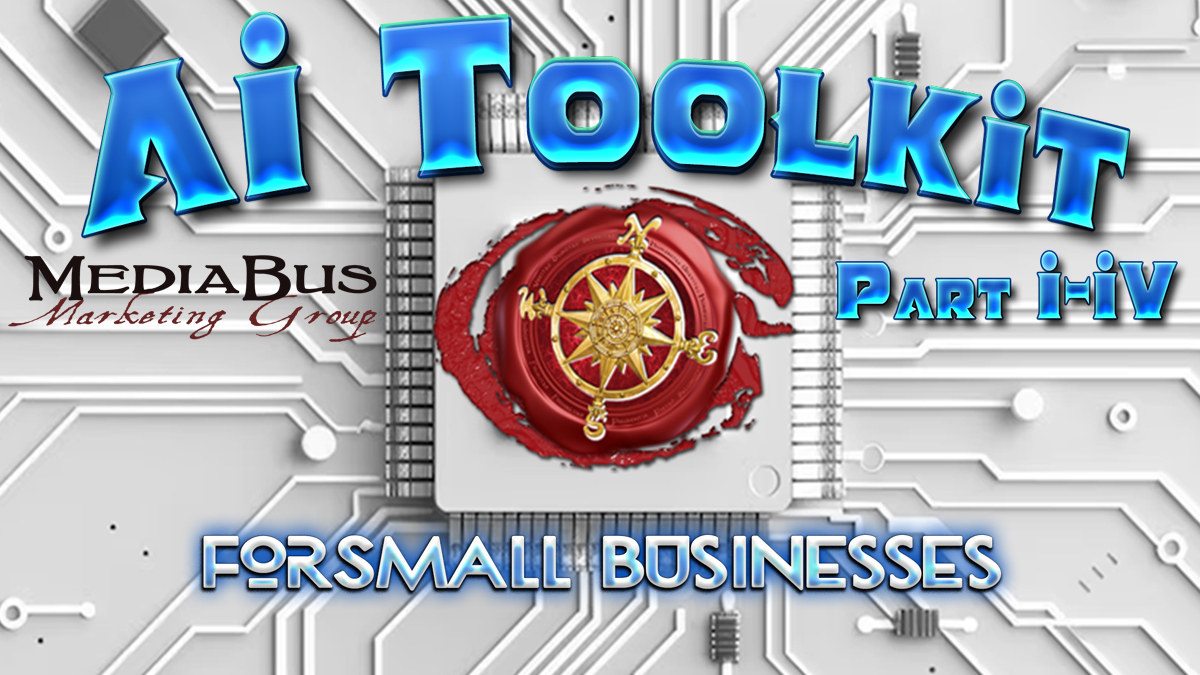Transform Your Strategies with 9 Futuristic Insights
Introduction to AI in Customer Engagement
Artificial Intelligence (AI) has stepped out of the shadows and is now the driving force behind revolutionary customer experiences. Today, businesses can no longer rely on reactive support or generic marketing. In the past, engagement depended on static campaigns or limited behavioral triggers. Today, AI-powered predictions transform how brands operate. Instead, AI-powered customer engagement predictions now enable you to anticipate customer needs, personalize interactions, and boost loyalty like never before by:
-
Listening to their customers in real time
-
Analyzing behavior across channels
-
Responding with precise, relevant, and emotionally intelligent interactions
Artificial Intelligence (AI) is no longer an optional experiment—it’s a core driver of modern customer experiences. In the past, engagement depended on static campaigns or limited behavioral triggers.
If you’ve ever wondered why companies like Amazon, Netflix, or Spotify feel like they know you, the secret is predictive AI working behind the scenes.
You might be wondering, “How does this actually work?” Let’s start by understanding why AI predictions matter so much.
Why AI Predictions Matter for Customer Engagement
AI predictions shift customer engagement from guesswork to science. Traditional engagement strategies relied on historical data, surveys, or gut feelings. But AI leverages machine learning, real-time analytics, and natural language processing to spot patterns you’d never see manually.
This means you can:
-
Proactively solve customer problems before they escalate.
-
Deliver hyper-relevant recommendations in the moment.
-
Increase retention and lifetime value by meeting customers where they are.
-
Identify opportunities and risks early: Detect potential churn, upsell opportunities, or service issues before they escalate.
-
Deliver tailored experiences: Offer personalized content, offers, and interactions at scale.
-
Boost operational efficiency: Reduce manual work with intelligent automation and recommendations.
These predictions enable businesses to move from reactive service (responding after the fact) to proactive engagement (anticipating and addressing customer needs before they arise).
The Evolution from Reactive to Proactive Engagement
Remember when customer service meant paying employees, waiting for an angry email or call? Those days are fading fast. Today, brands can analyze signals like browsing behavior, purchase history, and even facial expressions to predict what customers may want next.
For example:
-
If a customer lingers on a product page, AI can trigger a chat popup offering assistance.
-
If sentiment analysis detects frustration in messages, support can escalate the issue immediately.
-
When usage patterns decline, automated campaigns can win the customer back before they churn.
This is the essence of proactive engagement—solving needs before customers even articulate them.
Core Components of AI Powered Predictions
Data Collection and Customer Insights
Data is the lifeblood of AI. To make accurate predictions, you must gather:
-
Transaction histories
-
Website interactions
-
Social media engagement
-
Customer service conversations
-
Product usage logs
Collecting this data responsibly fuels your AI models and builds a 360-degree view of your customer.
Machine Learning Models and Algorithms
Once you have data, machine learning algorithms process it to:
-
Identify correlations
-
Detect anomalies
-
Predict future actions
Popular models include:
-
Classification algorithms for segmenting customers
-
Regression models for forecasting churn
-
Recommendation engines for suggesting products
These models learn and improve over time, sharpening predictions continuously.
Real-Time Analytics and Behavior Tracking
Real-time tracking closes the gap between insight and action. With the right tools, you can monitor:
-
Clickstreams
-
App usage
-
Purchase intent signals
For example, if a customer abandons their cart, your AI can instantly send a personalized offer via email or SMS. That’s how you turn insights into revenue.
Core Components of AI Powered Predictions
Data Collection and Customer Insights
Data is the fuel of predictive AI. The more complete and clean your dataset, the more accurate your predictions. Essential sources include:
✅ Transactional Data – Purchase history, cart additions, returns.
✅ Behavioral Data – Website clicks, app usage, browsing time.
✅ Interaction Data – Emails, support tickets, chat logs.
✅ Demographic Data – Age, location, language, preferences.
✅ Third-Party Data – Social media activity, sentiment scores.
When you aggregate this information, you gain a 360-degree view of each customer, which forms the basis of any prediction model.

Machine Learning Models and Algorithms
This is where the magic happens. Machine learning uses sophisticated algorithms to:
-
Classify customers into relevant segments (e.g., VIP, at-risk, new)
-
Predict churn likelihood or buying propensity
-
Recommend content and offers
Common models include:
-
Regression Analysis – Forecasts numeric outcomes like revenue or purchase size.
-
Classification Trees – Sorts customers into categories.
-
Clustering Algorithms – Groups similar behaviors or profiles.
-
Natural Language Processing (NLP) – Understands text-based inputs (emails, chats).
Over time, models adapt as they learn from new data, getting smarter and more precise.
Real-Time Analytics and Behavior Tracking
Speed matters. Modern AI solutions don’t just analyze yesterday’s data; they react to signals right now.
For example:
-
A customer views a product three times—AI can trigger a discount code instantly.
-
A chatbot detects negative sentiment—an agent is notified to intervene.
-
Browsing slows on your app—AI offers help before abandonment.
This real-time orchestration is what makes predictive engagement feel seamless and relevant.
Integration with CRM, Marketing, and Support
A standalone AI system is limited. Integrating AI into your CRM, marketing automation, and customer support platforms ensures predictions lead to real action:
-
Sales teams get alerts on high-intent leads.
-
Marketing automation triggers based on AI signals.
-
Support tickets are prioritized based on AI-detected urgency.
To truly understand how AI engagement predictions work, explore the pillars that make them possible.
9 Futuristic Insights Shaping Customer Engagement
Let’s dive into the nine most powerful trends you need to watch.
Predictive Personalization at Scale
Forget batch-and-blast campaigns. AI can tailor messaging, content, and offers to individual customers in real time. Netflix and Amazon pioneered this approach, but today, even small brands can implement it. AI enables brands to create one-to-one personalization for thousands of customers simultaneously.
AI can generate thousands of micro-segments, enabling:
-
Product recommendations tailored to individual tastes
-
Dynamic pricing based on likelihood to purchase
-
Personalized content across email, social, and web
It adapts messaging, recommendations, and offers based on individual preferences, behaviors, and context. This level of personalization used to be reserved for tech giants. Today, scalable AI platforms democratize it for companies of any size.
AI-Driven Sentiment Analysis for Instant Feedback
Sentiment analysis decodes emotions in customer communication. By detecting joy, frustration, or confusion, brands can customize their responses to be more human and empathetic. Sentiment analysis uses NLP to:
-
Analyze words, phrases, and emojis for emotional tone
-
Score the sentiment as positive, neutral, or negative
-
Trigger workflows (escalation, follow-up, thank-you)
For example, if a customer emails, “I’m so frustrated with my last order,” AI can automatically prioritize the ticket for human response.
Sentiment analysis tools evaluate text, voice, or even facial cues to understand a customer’s emotional state. This insight helps businesses:
-
Escalate angry customers to senior support agents.
-
Identify promoters who might leave positive reviews.
-
Adjust communication tone in real time to match sentiment.
Dynamic Customer Journey Mapping
AI continuously updates customer journey maps, reflecting real-world interactions across channels. The result? You can identify friction points and optimize experiences as they unfold. This helps you guide customers seamlessly from awareness to purchase.
Unlike static funnels, AI-powered journey mapping:
-
Updates in real time as customers move between channels
-
Adjusts messaging based on new behaviors
-
Identifies friction points where drop-offs occur
This ensures no customer feels lost or forgotten.
For example, if users abandon carts after comparing prices, AI could trigger price-match offers.
Churn Prediction and Retention Strategies
AI models can forecast which customers are likely to churn, sometimes months in advance. With that insight, you can create win-back campaigns that feel personal, not desperate. AI detects early signs of customer disengagement, such as reduced app usage or negative feedback. This allows brands to proactively launch retention campaigns like exclusive offers, loyalty perks, or personal outreach.
By analyzing usage frequency, sentiment, and historical behavior, AI predicts churn risk with remarkable accuracy.
Retention strategies then include:
-
Proactive outreach (“We noticed you haven’t logged in…”)
-
Targeted incentives (“Here’s 15% off your next purchase”)
-
Personalized content (“Recommended for you…”)
These actions often rescue relationships before they break.
Businesses using churn prediction often see retention rate increases of 5-10%.
Conversational AI and Hyper-Personalized Messaging
AI-powered chatbots and voice assistants don’t just answer FAQs anymore. They proactively recommend products, resolve issues, and build relationships.
AI chatbots and voice assistants go beyond canned replies—they:
-
Engage customers with tailored recommendations.
-
Help with transactions and troubleshooting.
-
Maintain context across conversations for consistency.
This creates a seamless, human-like support experience.
Conversational AI combines chatbots, voice assistants, and messaging apps to:
-
Handle FAQs instantly
-
Offer purchase assistance
-
Automate returns or reorders
-
Collect feedback conversationally
The result? Customers feel heard 24/7 without straining your team.
Next-Best-Action Recommendations
AI predicts the next action most likely to drive conversion, like suggesting an upsell or prompting a review. These micro-moments can have a big impact on revenue. These AI models analyze what similar customers have done and predict the next action most likely to delight or convert the customer.
This could mean suggesting:
-
A complementary product.
-
A helpful tutorial.
-
A discount at just the right moment.
AI models assess:
-
Past purchases
-
Browsing patterns
-
Engagement scores
…and predict the next-best action to deepen the relationship, whether it’s a product upsell, content suggestion, or loyalty reward.
Visual Recognition and Contextual Engagement
Visual AI can identify products in images, recognize faces for loyalty programs, customize content based on visual context, enabling features like visual search, AR experiences, or automated tagging.
For example, a customer snaps a photo of an item, and your app instantly finds it in your catalog. Retailers like IKEA and Sephora use this tech for virtual try-ons and design previews.
AI-Enhanced Customer Support Automation
AI routing, auto-tagging, and case summarization make support faster and more accurate while reducing operational costs.
AI accelerates support by:
-
Auto-routing tickets to the right agent.
-
Summarizing cases to reduce resolution time.
-
Suggesting knowledge base articles based on inquiry content.
This boosts efficiency and consistency in service delivery.
Emotion AI for Empathetic Experiences
Emotion AI reads facial cues, voice tone, and text sentiment to create truly empathetic interactions. This builds trust and loyalty. Emotion AI reads tone, pace, word choice, and facial cues to detect emotions. Brands use this to:
-
Deliver more sensitive, empathetic responses.
-
Build deeper emotional connections with customers.
-
Prevent escalations by addressing frustration early.
This creates interactions that feel more human and caring, especially in industries like healthcare or financial services.
Overcoming Challenges in AI Adoption
Measuring Success: Key Metrics and KPIs
To gauge impact, track metrics like:
-
Customer Lifetime Value (CLV): Are you extending customer relationships? A Higher CLV indicates more profitable, long-term relationships.
-
Net Promoter Score (NPS): Are customers more likely to recommend you? Gauge customer loyalty and advocacy.
-
Engagement Rate: Are interactions increasing across touchpoints? Tracks how actively customers interact with your brand.
- Operational efficiency: Reduced resolution times, lower costs, and fewer manual tasks.
These indicators help you refine your strategy over time.
The Overall Takeaway is to Embrace the Future with Confidence
AI-powered customer engagement predictions aren’t a futuristic fantasy—they’re happening right now, and they are no longer an optional but a must-have! By leveraging predictive personalization, conversational AI, and emotion analytics, you can create experiences that feel intuitive, caring, and unforgettable.
If you want to stay competitive, they’re essential for any business serious about growth. It’s time to explore AI tools and strategies that fit your business model. The brands that embrace this change will be the ones customers remember tomorrow. Imagine a future where you don’t just react to customer needs but anticipate them before they’re expressed. A future where every interaction feels personal, empathetic, and effortless.
That future starts today.
✅ Ready to transform your customer engagement?
-
Start by auditing your data readiness.
-
Choose an AI platform that fits your scale.
-
Train your team to embrace predictive tools.
The brands that act now will lead tomorrow.
Don’t wait. Start building your AI-powered engagement strategy today—and create experiences your customers will never forget.
Ready to unlock AI’s full potential? Start with a pilot AI-powered engagement project. Test predictive personalization, experiment with sentiment analysis, or deploy a smart chatbot. Don’t hesitate—future-proof your strategy today.
Your next step: Talk to our AI solutions experts, audit your customer data, and outline an adoption roadmap. The future of customer engagement is here—will you lead or follow?
Other Articles You May Enjoy:
FAQs About AI-Powered Customer Engagement Predictions
1. What is AI-powered customer engagement?
AI-powered customer engagement uses machine learning and data analytics to anticipate customer needs and personalize interactions.
2. How does AI predict customer behavior?
By analyzing historical and real-time data to forecast actions and preferences.
3. How can AI improve customer retention?
AI predicts churn risk and helps deploy proactive campaigns that keep customers engaged.
4. Is AI expensive to implement?
Costs vary, but cloud-based AI solutions are increasingly affordable for mid-sized businesses.
5. What about data privacy?
You must comply with laws, provide clear disclosures, and invest in secure infrastructure.
6. Are there risks to customer privacy?
Yes. You must comply with regulations like GDPR and be transparent about data usage.
7. Can small businesses use AI engagement tools?
Absolutely—many cloud tools are designed for SMBs.
8. How soon can I expect results?
Typically, within 3–6 months, depending on the complexity of your data and systems.
9. What industries use AI-powered engagement?
Retail, banking, healthcare, SaaS, and nearly every other sector leverage AI to improve CX.





